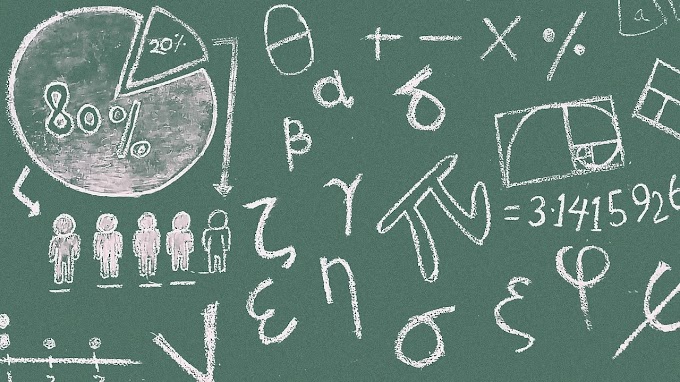DAILY CURRENT AFFAIRS
India will expand by 10% this fiscal year, according to NCAER's director.
The Most Important Points
It is anticipated that this rise will accelerate due to fewer COVID-19-related supply interruptions, greater demand for contact-intensive disruptions and conventional services, and the general health of the global economy.
On the other hand, the actual difficulty would be to maintain a growth rate of 7-8 percent in the future years.
Poonam Gupta's biography
Poonam Gupta is the first woman to hold the position of director-general of the NCAER. Before joining NCAER, she was the World Bank's chief economist, where she gained valuable experience. Aside from that, she has served as a Reserve Bank of India Chair Professor at NIPFP and as a Professor of Macroeconomics at ICRIER, among other places.
Background
India's economic growth increased to 20.1 percent in the April-June quarter of the current fiscal year, owing to a low base in the previous fiscal year and the second wave of the COVID-19 pandemic in the preceding fiscal year. Compared to last year, the gross domestic product (GDP) had also decreased by 24.4 percent in the April-June quarter of 2020-21.
The prediction of the RBI
The Reserve Bank of India anticipates that the GDP will rise by 9.5 percent in 2021-22. During the first quarter of 2021-22, the growth rate is predicted to be 21.4 percent; in the second quarter, 7.3 percent; third quarter, 6.3 percent; and fourth quarter, 6.1 percent.
The National Council for Applied Economic Research (NCAER) is a non-profit organization dedicated to doing applied economic research.
It is a non-profit economic think tank with its headquarters in New Delhi. Currently, Nandan Nilekani serves as the president of this governing council. It was founded in 1956 with financial backing from Tata Sons, the Ford Foundation, and the Ministry of Finance of India. In October 1959, Pandit Jawaharlal Nehru laid the foundation stone for the National Center for Advanced Engineering Research (NCAER).
‘Climate Action and Finance Mobilization Dialogue' between India and the United States
On September 13, 2021, Bhupender Yadav, India's Environment Minister, and John Kerry, the United States' Special Presidential Envoy for Climate, officially began the India-US Climate Action and Finance Mobilisation Dialogue in New Delhi.
Highlights
The Climate and Clean Energy Agenda 2030 Partnership between India and the United States provided the impetus for this conversation.
This Partnership will offer both nations an opportunity to resume their cooperation on climate change while also addressing the issues of funding.
It will also boost bilateral collaboration between India and the United States in the areas of climate and environment and illustrate how the world can connect rapid climate action with inclusive and resilient economic development.
Background
The India-US Climate Action and Finance Mobilisation Dialogue were established in the wake of a declaration by Prime Minister Narendra Modi and US Vice President Joe Biden to step up efforts to fulfill the Paris Agreement goals. At the Leaders' Summit on Climate Change in April 2021, this announcement was made in conjunction with the official launch of the Partnership.
Partnership for the Clean Energy Agenda 2030 between India and the United States.
Getting Investments to Work
Demonstrating clean technology and facilitating green partnerships in India to establish sustainable development models that may be replicated in other developing nations
Following the Taliban's takeover of Afghanistan, the United Nations has requested $606 million in help.
In response to the Taliban's takeover of Afghanistan, the United Nations will convene a high-level donors meeting on September 13, 2021, in which they will request emergency financing for the country.
Highlights
A “flash appeal” for more than $600 million in aid for Afghans was launched by the United Nations secretary General, Antonio Guterres, who was in charge of the conference.
As the United States and NATO soldiers prepare to leave Afghanistan after a 20-year war, the Taliban destabilizes.
What was the motivation for this appeal?
An appeal for $600 milliona was launched in response to fears that unrest and upended humanitarian operations, along with the prolonged drought, would put more lives at risk and bring Afghanistan closer to starvation than previously anticipated. Recent events in Afghanistan have heightened the vulnerability of Afghans, who have already been subjected to hardship and violence in their daily lives. As a result, the United Nations' World Food Program will get the vast majority of the cash raised during the meeting.
What would be the benefits of this conference?
Western nations and significant conventional United Nations contributors who wish to assist ordinary Afghans without giving up any public relations triumph or financial assistance to the Taliban will be put to the test at the meeting.
UNHCR is the United Nations Refugee Agency
Filippo Grandi, the director-general of the United Nations High Commissioner for Refugees, paid an unexpected visit to Kabul before the conference. He was tasked with assessing the humanitarian needs and condition of 3.5 million internally displaced Afghans, including 500,000 who would be replaced in only one year in 2021.
Taliban Afghanistan is a country with a long history of conflict.
Following the capture of Kabul by the Taliban on August 15, 2021, the Taliban took control of Afghanistan. Many Afghans remain extremely afraid, despite Taliban promises of inclusivity and a sweeping amnesty for erstwhile opponents.
Bhupendra Patel: New CM of Gujarat
On September 13, 2021, Bhupendra Patel was sworn in as the new Chief Minister of Gujarat, replacing Anand Sharma.
Highlights
Governor Acharya Devvrat administered the oath of office to him at the Raj Bhavan in Gandhinagar.
He took the oath of office a day after being chosen as the Bharatiya Janata Party (BJPlegislative )'s party leader in the Lok Sabha.
Cabinet members will be sworn in later when the ruling party has determined the names.
It is probable that the lawmakers from Saurashtra and northern Gujarat, where the BJP intends to enhance its prospects in the state's Assembly election, would be granted more representation in the Cabinet.
What is the identity of Bhupendra Rajnikant Patel?
A member of the Bharatiya Janata Party, he is an Indian politician who now serves as the chief minister of the Gujarat state. In addition, he serves as a member of the Gujarat Legislative Assembly, where he represents the Ghatlodia seat. He was born in Ahmedabad, Gujarat, India, in July 1962, to a Gujarati Kadava Patidar family. Ahmedabad's Government Polytechnic awarded him a Diploma in Civil Engineering, which he finished. Aside from that, he has had a long association with the Rashtriya Swayamsevak Sangh. He is a builder by trade and is on the board of directors of the Sardardham Vishwa Patidar Kendra. In addition, he serves as the head of the Vishwa Umiya Foundation's standing committee. Father Dada Bhagwan created the Akram Vignan Movement, which he adheres to this day.
Gujarat Chief Minister heads the government of Gujarat.
Vijay Rupani resigned from his position as Gujarat's chief minister on September 11, 2021, and Bhupendra Patel took over as the state's chief minister on September 13. BJP legislative party leader and Gujarat Chief Minister-elect were elected on September 12, 2021, to a two-year term in both positions.
The India–Africa Defense Dialogue will take place in conjunction with DefExpo.
Highlights
India's institutionalization is taking place. With the Africa Defence Dialogue, existing relationships between African countries and India would be strengthened.
The agreement will also aid in the exploration of new areas of convergence for bilateral partnerships in sectors such as training, capacity development, cyber security, counter-terrorism, and maritime security, among others.
As part of the agreement, India has designated the Manohar Parrikar Institute for Defence Studies & Analyses as the knowledge partner for the India-Africa Defence Dialogue. According to the agreement, the institute will contribute to the provision of required assistance to the defense cooperation between the two nations.
The Indian defense minister, Rajnath Singh, will also welcome the "Defence Ministers of African Nations" during the next edition of the India-Africa Defence Dialogue, which will take place concurrently with the DefExpo
The next DefExpo is set to occur in Gandhinagar, Gujarat, in March of the following year.
The dialogue's key theme
India - Africa: Adopting Strategy for Synergizing and Strengthening Defence and Security Cooperation' will be the topic of this year's India Africa Defence Dialogue.
Background
It was conducted in conjunction with the DefExpo on February 6, 2020, in Lucknow, Uttar Pradesh. It was the first-ever India Africa Defence Ministers Conclave (IADMC) to be hosted in the country. Organizers included representatives from both the Ministry of Defense and the Ministry of External Affairs. In the run-up to the India Africa Forum Summit IV, this conference was the first in a series of Pan-African activities taking place at the Ministerial level. In the Conclave, a joint declaration dubbed the "Lucknow Declaration" was approved as the Conclave's conclusion document.
Relations between India and Africa
India and Africa have had a long and strong relationship dating back thousands of years. Defense ties between the two nations are founded on two guiding concepts known as 'SAGAR' (Security and Growth for All in the Region) and 'Vasudhaiva Kutumbakam' (Vasudhaiva Kutumbakam), which stand for Security and Growth for All in the Region.
Colexion is the world's largest licenced NFT platform.
Colexion, the world's largest licenced NFT (non-fungible tokens) platform, has planned a formal public lunch on September 10, 2021, to be held in New York City.
Highlights
Colexion is a next-generation technology platform for sports, entertainment, and art.
Because NFTs represent the subsequent billion-dollar development, it can be stated categorically that the digital ecosystems of sport, entertainment, and art are the most important things that will happen in the following years.
Collectors and investors worldwide have amassed extensive collections of a diverse range of memorabilia that have gained significant value over the years.
Users will purchase, sell, and trade NFTs of their favorite superstars shortly using this site. It has also begun a campaign for users to pre-register with the company.
What exactly is Coleccion?
Colexion is a platform for non-financial trade and community interaction. It offers users the ability to trade, purchase, and participate in interactive activities. It will include NFT collections of worldwide superstars as part of its offerings. Users would be able to buy several tiers of blind boxes and special edition NFT collections from celebrities through this portal. Each NFT collectible consists of a unique record on the blockchain, which the NFT Foundation maintains. It is only through the platform or trading on the Colexion marketplace that users can claim ownership of this one-of-a-kind NFT collectible piece of art. Colexion will allow standard payment methods such as credit cards to make it convenient for mainstream customers to join
Colexion is the subject of this article.
Colexion will include celebrities from various fields, including sports, the arts, entertainment, and other areas. During the initial phase of the launch, global sports stars will serve as the primary partners.
The Colexion's primary goal is to It was founded to provide a substantial gateway into virtual reality through the use of NFT collections, trading, and social networking platforms. It will introduce the world of novel technologies through the NFT.
Solar PV cell manufacturing should be increased, according to the Vice President.
In a recent speech, India's Vice President, M. Venkaiah Naidu, urged state governments to expand solar PV systems and modules in the country.
Highlights
He advocated for the establishment of manufacturing facilities to increase the output of solar PV cells and modules.
He emphasized the necessity of "Atma Nirbharta" in solar energy, which he believes may be achieved via the active engagement of states.
He also advised that investments be made in training and upskilling the workers to accept the latest technology, using the example of the 'Surya Mitras' project.
Pondicherry is home to a solar energy facility.
He cut the ribbon on a solar power plant with 2.4 megawatts at Pondicherry University in the Union Territory of Puducherry. He emphasized the significance of renewable energy such as wind, solar, and modest hydroelectricity on this occasion.
India's solar energy potential
India has been making rapid progress toward becoming a worldwide leader in the so-called "energy transition." As the world's largest solar power market, India ranks fifth in terms of total installed solar capacity, with more than 40 Gigawatts of installed solar capacity.
Innovation in the Solar Energy Industry
Also emphasized by the Vice President was the significance of innovation in the solar industry. He proposed that other pathways for the installation of ground-mounted PV systems be investigated. For example, the building of floating solar power plants on water, such as the NTPC's floating solar power plant with 100 MW in Telangana.
The significance of such efforts cannot be overstated.
Such creative initiatives will aid in the enhancement of job opportunities and the promotion of innovations and improvements in India's domestic solar sector.
The foundation stone for Raja Mahendra Pratap Singh State University will be laid by the Prime Minister.
On September 13, 2021, Prime Minister Narendra Modi will lay the foundation stone for the Raja Mahendra Pratap Singh State University in Aligarh, Uttar Pradesh, which will be named in his honor.
The most important information
The State Government is establishing this institution in memory of Raja Mahendra Pratap Singh, a renowned independence warrior, social reformer, and educationist who lived during the British Raj.
It is being constructed on approximately 92 acres in the villages of Lodha and Musepur Kareem Jarouli in the Kol tehsil of Aligarh state.
Aligarh Division's 395 colleges will be affiliated with the university, according to the university.
On this occasion, the Prime Minister will also pay a visit to the Aligarh Node of the Uttar Pradesh Defence Industrial Corridor and the Raja Mahendra Pratap Singh State University's display models.
DIC is an abbreviation for Defense Industrial Corridor.
The Prime Minister of India announced the establishment of the Defence Industrial Corridor in Uttar Pradesh in February 2018 when he opened the UP Investors Summit in Lucknow. A total of six nodes, namely Agra, Aligarh, Jhansi, Kanpur, Chitrakoot, and Lucknow, have been proposed as part of the corridor's development. The procedure of allocating land has been finished at the Aligarh Node. The land has been allocated to 19 companies, investing one thousand two hundred and forty-five crore rupees. To make India self-sufficient in defense production, this corridor aims to promote the concept of "Make in India."
Raja Mahendra Pratap Singh
Rajahendra Pratap Singh As an Indian independence warrior, writer, journalist, revolutionary, and President of the Provisional Government of India, which acted as the Indian Government in exile during World War I from Kabul in 1915, he made a name for himself in the international community. In 1940, he was also instrumental in the formation of the Indian Executive Board in Japan. In 1911, he was a participant in the Balkan War. He is sometimes referred to as "Aryan Peshwa."
Victory Flame Swarnim Vijay Varsh landed in Dahung, Arunachal Pradesh.
The Swarnim Vijay Varsh Mashaal, also known as the victory flame, arrived in Dahung, Arunachal Pradesh, on September 12, 2021, following a tour through the United States.
Highlights
The triumph torch was carried around the country to commemorate 50 years since India's victory over Pakistan during the 1971 Indo-Pak War.
It was greeted with full military honors as it arrived at Sessa, Arunachal Pradesh.
While the triumph torch was being transported to Dahung, the cavalcade was greeted by enthusiastic residents who expressed their heartfelt appreciation to the brave troops who had fought and sacrificed their lives throughout the 1971 War.
It will travel to Rupa, Bondi La, and Tawang in the coming days. It will remain with the Ball of Fire Division until September 23, 2021. It will take part in several events planned to commemorate the 50th anniversary of the end of the war with Pakistan and the liberation of Bangladesh, among other things.
Concerning Swarnim Vijay Mashaal
When India defeated Pakistan in the 1971 Swarnim Vijay Varsh, it was symbolized with a flame known as the 'Swarnim Vijay Mashaal' or the 'victory flame.' On December 16, 2020, Prime Minister Narendra Modi lit the torch at the National War Memorial in New Delhi, marking the beginning of the 21st century. Four triumph flames were ignited at the National War Memorial from the everlasting flame, and they are now being carried across the towns and villages of India by the people. Also included were villages where Param Vir Chakra (PVC) and Maha Vir Chakra (MVC) recipients from the 1971 conflict resided.
A war between India and Pakistan began in 1971.
It was a military conflict between India and Pakistan in East Pakistan during the Bangladesh Liberation War in the 1970s. The battle for Dacca took place between December 3, 1971, and December 16, 1971, and resulted in the city's collapse (Dhaka). It lasted only 13 days, making it one of the shortest conflicts in recorded history.
The Supreme Court has ruled that an employee cannot insist on being transferred to a certain location.
Highlights
The Supreme Court made this observation while rejecting a plea filed by a lecturer challenging an order issued by the Allahabad High Court in October 2017.
The Allahabad high court dismissed her appeal against the rejection of her representation by the authority responsible for her transfer from Amroha to Gautam Buddha Nagar. She had filed the appeal against the refusal of her presentation by the authority responsible for her transfer from Amroha to Gautam Buddha Nagar.
Background
A woman was sent to the Amroha district as a professor. It was via this advocacy that she was granted admission to a college in Gautam Buddha Nagar. However, in September 2017, the authority ruled that it was unconstitutional.
Her attorney claimed in 2017 before the high court that she had been working at Amroha for the previous four years and that the government policy was in her favor
The judgment of the Allahabad High Court
The high court observed that an order issued by the authorities involved revealed that the ladies had been employed at a college in Gautam Buddha Nagar for 13 years, beginning with their first appointment in December 2000 and ending with their termination in August 2013.
As a result, the woman's plea for her to be posted at the same institution again was denied.
Petitioner was not entitled to be posted at a location where she had already worked for about 13 years, according to the court's ruling as well.
According to the court, if a woman has served the required number of years at her current location, she has the right to request that she be transferred to another site.























0 Comments